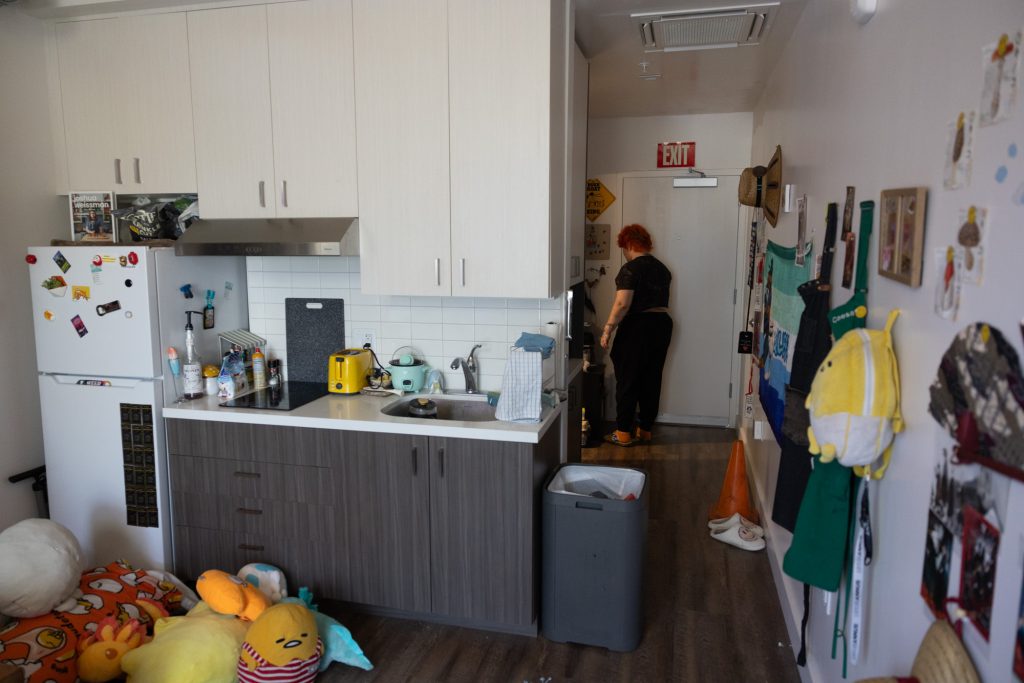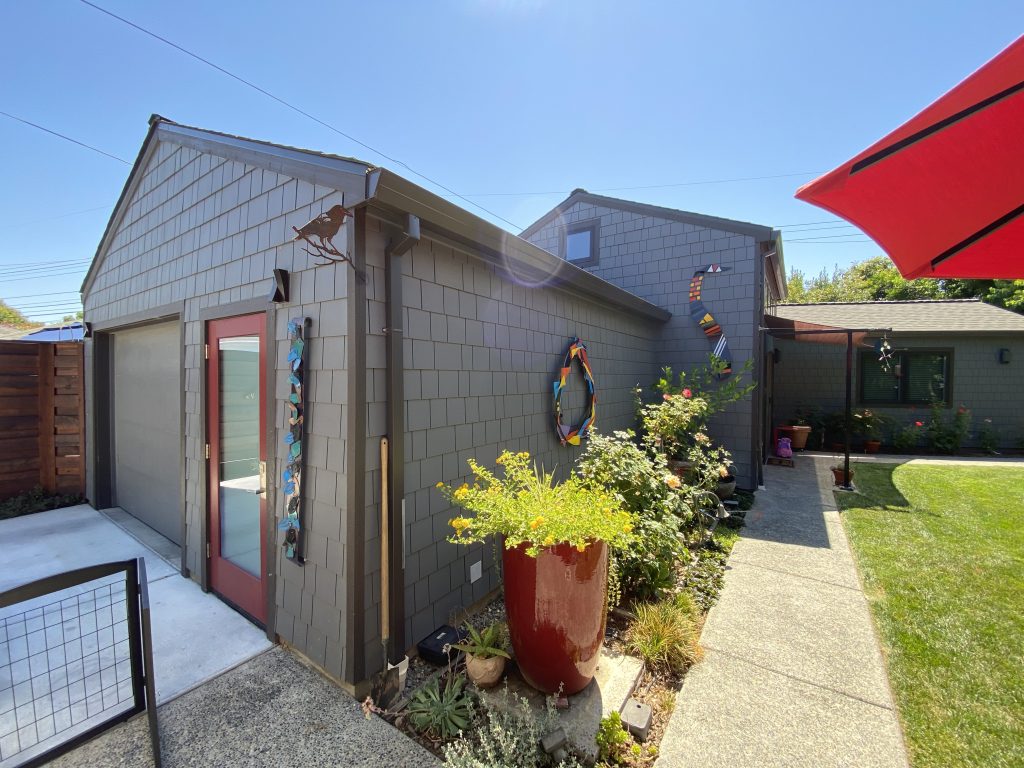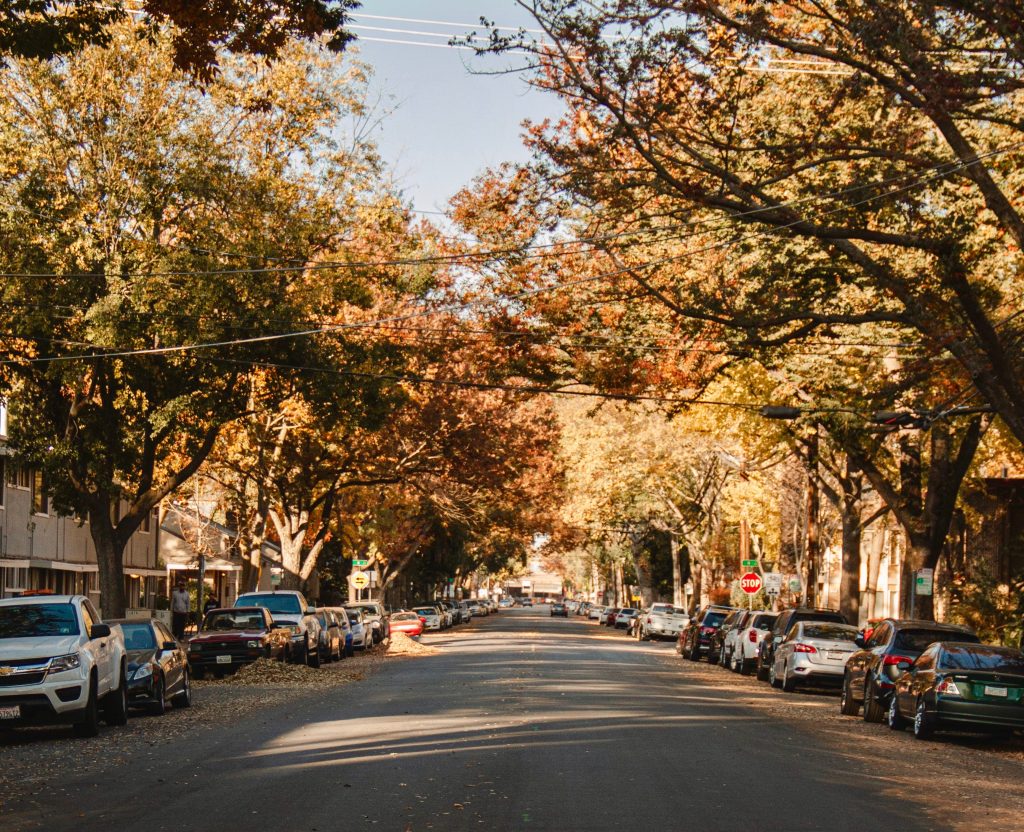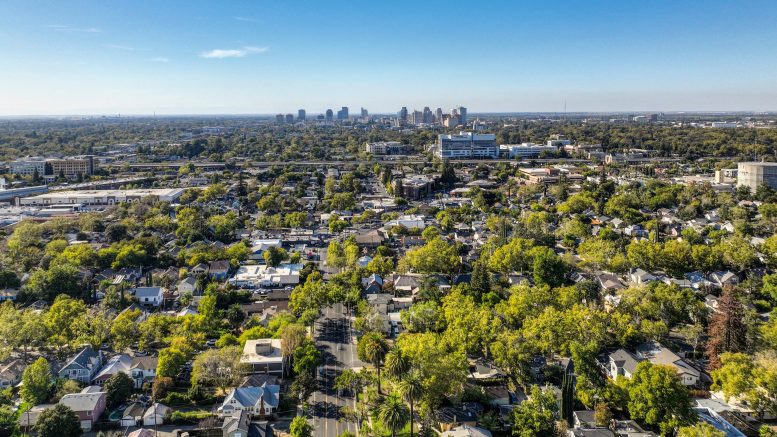By Chris Nichols, Scott Thomas Anderson, Ben van der Meer, Robert Hansen, Jessica Laskey
Sacramento was long-known as one of California’s most affordable metros. A place where families could comfortably buy a home or rent an apartment without drowning in debt.
But with an influx of new residents and the region’s severe lack of affordable housing, rents and home prices have skyrocketed over the past decade. How then does Sacramento get back to its once-affordable self? Should it build more micro apartments and granny flats? Could transforming office buildings into apartments help? What about tax credits, smart growth and changing the state constitution or building more “social housing?”
We’ve examined those seven possible solutions to the housing crisis. None of them are easy, and they won’t solve the problem individually. But together, they might pave the way for a once-again affordable Capital City.
Micro apartments are popping up across Sacramento.

Some local developers are thinking small — really small — to help solve Sacramento’s massive affordable housing shortage.
They’re building “micro apartments,” with some as tiny as 267 square-feet at the recently opened Sonrisa complex downtown. Others, like 19J in Midtown, offer a bit more elbow room with an average of 415 square feet or West Sacramento’s Kind where a studio is a cozy 360 square feet.
Housing advocates say more of these micro flats and their smaller rents are needed regionwide. They point out Sacramento County has a shortfall of about 56,000 affordable homes for low-income renters, a number that has remained stubbornly high for years, according to a May study by the California Housing Partnership.
Though micro units won’t fully solve the housing crisis, and might not work for larger, low-income families, advocates say they can help. Monthly rent at Sonrisa, for example, ranges from $635 to $952, well below average.
“I think projects like this are critical to responding to the housing crisis on a variety of levels,” said Danielle Foster, executive director with Capitol Area Development Authority, or CADA, which opened the 58-unit Sonrisa at 13th and O streets in March and limits each apartment to a maximum of two people. “We have a lot of one- and two-person households that are looking for affordable places to live and it’s really hard to do without a second income or a roommate.”
Sonrisa applicants must make between 40% and 60% of the area median income to qualify for the units, which filled up quickly and continue to be in very high demand.
“We have a waiting list of over 860 households right now just for this location,” Foster added. “And so we know there’s a great need and a great demand for more housing of this type.”
~ Chris Nichols
ADUs are a window into Sacramento’s housing options

In the summer of 2016, Sacramento City Council members began cautiously acknowledging what some residents had been saying for two years — California’s capital was in the grips of a devastating affordable housing crisis.
Then-Councilman Steve Hansen, representing Downtown and Midtown neighborhoods at ground zero of this property pain, started to hold town hall meetings for tenants to voice their concerns about being displaced or even becoming homeless. Hansen was looking for immediate steps to boost affordable rental stock in the urban core. He was soon leading the charge on the council’s Law and Legislative Committee to streamline rules for building accessory dwelling units, or ADUs (colloquially known as “granny flats”).
Around the nation, ADUs have helped alleviate housing crunches because they allow property
owners to use excess space on their parcels for building small bungalows or free-standing studio apartments that can be rented out to tenants. This flexibility adds more neighborhood housing without a major development project being financed and approved — while also giving local homeowners a chance to supplement their income.
For policymakers, the appeal is in the simplicity: ADUs don’t call for purchasing new land nor seriously renovating older properties.
But can they actually make a difference in housing supply? The best evidence so far may be
overall enthusiasm of property owners across California to engage in the experiment. The state has seen at least a tenfold increase in permits taken out for ADUs between 2016 and 2019.
The City of Sacramento has since revamped its entire ADU strategy. Local homeowners can now access the city’s free permit-ready ADU plan, which encourages ADU construction by waiving impact fees for homeowners (these can be as much as $10,000).
Nevertheless, ADUs have historically been a minute part of Sacramento’s housing stock and that hasn’t changed yet. As of August, there were only a dozen pre-approved ADU plans underway via Sacramento’s new program. City leaders are hoping more local homeowners will help the movement gain steam.
~ Scott Thomas Anderson
Office-to-housing conversions are doable — but lack interest

In theory, it makes sense: Take empty office space with declining interest and transform it into an obvious need — more housing.
Reality, though, is something else, as evidenced by a lot of talk about office-to-housing conversions, but at least so far in the Sacramento region, not much sign of it actually happening.
“I think a lot of developers are scared,” said Young Kim, a principal at the Sacramento office of HRGA, a leading urban design firm. “You’ve got to work with the existing footprint, and it can be too deep, it can be too shallow.”
Design firm professionals like Kim describe the myriad of challenges in turning an office building into a residential one. They include finding unit sizes that fit an existing building’s parameters and adding building infrastructure to account for increased electrical and water use.
Kim said a conversion also means a number of intrusions into the existing building envelope, and compliance with current standards for residential buildings.
“It’s doable, definitely,” he said. “My sense is when you raise all those items, I don’t think there’s a lot of interest.”
The possibility of turning office space into residential gained attention two years ago, as work-from-home or hybrid work schedules began to take hold and demand for office space began to fall.
That trend is still playing out as office leases expire and tenants shrink or eliminate their office footprints entirely. But so far, Kim said, he’s not getting many inquiries from building owners who want to pivot to residential.
More commonly, owners of hospitality properties are asking about that switch instead, he said. Because hotels and motels are already set up for people to live in, that’s an easier lift.
Reflecting Kim’s experience, the number of office conversion proposals in the region is relatively low.
In Carmichael, owners proposed turning a two-story office building on Engle Road into 18 apartments. Though still under Sacramento County review as recently as last year, that project application is currently listed as closed, and the building still appears to have office tenants.
More recently, Sutter Capital Group said they’d bought a two-story office building at 1016 23rd St. in Midtown for a residential conversion. A formal application, though, has yet to emerge.
The best bet for turning offices into apartments is likely to come from buildings on either side of Capitol Mall in Downtown Sacramento. In early August, state of California officials announced they’d selected McCormack Baron Salazar to remodel state office buildings at 800 and 801 Capitol Mall and 751 N St. into apartments.
MBS Chief Development Officer Adhi Nagraj said at the time there’s a lot of work to do before the company has a clear plan for the buildings. Generally, it wants to deliver 400 to 800 units, with about 370 designated as affordable and 170 of those for very-low incomes, he said.
Timing is also still to be determined, though Nagraj said he looked forward to being back in Sacramento for a groundbreaking event in as soon as three years, after the state agencies currently using the buildings relocate elsewhere.
Kim, of HRGA, said the most likely factor to compel a trend of local office-to-residential conversions might be seeing it done successfully at least once. “If it’s $50 cheaper per square foot than ground-up development, then there will be interest,” he said.
~ Ben van der Meer
How housing tax credits can go a long way

The Low-Income Housing Tax Credit program, or LIHTC, has been the most important resource for creating affordable housing in the United States since it was created in 1986, according to some local housing experts. It’s provided Sacramento with millions of dollars to help build affordable rental properties.
Capitol Area Development Authority Executive Director Danielle Foster said her organization has received the tax credits, which are “used widely for the development of affordable housing.”
According to data provided by Foster, CADA has helped developers recover over $77 million in tax credits between 2018 and 2020 for 27 housing projects in Sacramento County. Of those, 85% of the 3,188 units were for low-income tenants, creating 2721 low-income units.
Tax credits are critical to the development of affordable rental housing, particularly permanent supportive housing that addresses the needs of chronically homeless individuals and families, according to Foster.
“Many affordable housing complexes are ready to develop but are delayed by the financing gap, which usually involves local funding, state funding and federal tax credits,” Foster said. “It is a very competitive process to get tax credits, and competing for tax credits can delay a project years.”
~ Robert J. Hansen
Growing ‘smart’ means addressing housing and climate concerns

The “smart growth” concept emerged in urban planning as a way to tackle affordability, accessibility and sustainability all at once by putting housing next to transit and other services — making greenhouse-gas-emitting cars all but unnecessary.
“When we talk about affordable housing, people tend to focus on the housing, but it’s important to remember that transportation, for the vast majority of people, is the second-greatest expense — even greater than food,” says Steve Cohn, a former Sacramento City Council member and the founder of Sacramento Metro Advocates for Rail and Transit (SMART), a nonprofit coalition that advocates for improved rail and transit services.
Additionally, Cohn says, “modes of transportation have been developed to rely on single-passenger automobiles … but the ill effects of that are frankly not sustainable. Climate change has put a punctuation point and an urgency on the need to transform our society.”
Cohn points to the R Street Corridor as a “real lesson” in the benefits of smart growth. Although it took decades to build , the former warehouse district was transformed into a hub of high-density housing, employment, entertainment and retail served by multiple modes of transit. Smart growth experts are now eyeing Stockton Boulevard for a similar transformation.
Bills like Assembly Bill 2011 (The Affordable Housing and High Road Jobs Act), which was signed by Gov. Gavin Newsom last September, and the proposed Assembly Bill 68 (The Housing and Climate Solutions Act), encourage more smart growth. The first streamlines approvals for mixed-income housing on underutilized commercial sites while the second speeds up approvals for infill multifamily housing in areas with existing infrastructure.
The approval process defined in AB 2011 is exempt from the California Environmental Quality Act (CEQA), which shortens the building process for affordable housing in zones already permitted for office, retail or parking.
Both bills help developers and local land-use authorities work together to meet sustainability goals set forth in regional plans, including the Metropolitan Transportation Plan/Sustainable Communities Strategy developed by the Sacramento Area Council of Governments, or SACOG.
The SACOG plan calls for the construction of 11,000 new homes annually, nearly two-thirds of which would be added to existing communities.
“Smart growth isn’t rocket science,” Cohn told attendees at this year’s State of the City forum, “but it is climate science.”
~ Jessica Laskey
Can a state constitutional amendment result in more housing?

Funding is often cited as the key reason affordable housing is so difficult to build, which means policymakers, developers and advocates are always looking for creative ways to find that money — including through the passage of housing bonds.
Bonds are a way for governments to quickly gain access to capital to confront crises like the lack of affordable housing. But this borrowing also creates debt that must be paid back down the road, which can present a problem.
“For the city to take on bonded indebtedness to support subsidized housing is a losing game,” says Jeff Harris, former Sacramento City Council member and a career general contractor. “We don’t have enough tax revenue coming in to support that. … We’ll never have enough money to float enough bonds.”
Harris warns that if the city takes on any more long-term debt on top of an already strained budget, it could be in danger of failing to pay, which would lower the city’s bond rating and put Sacramento “in a world of hurt.”
“Everybody is looking for an immediate answer,” Harris says, “but there are some problems that don’t have one.”
But bonds can be a lifeline to municipalities looking to take more direct action to increase affordable housing. To make it easier to pass bond measures, particularly those related to housing and infrastructure, policymakers led by Assembly Speaker Pro Tempore Cecilia Aguiar-Curry, D-Winters, introduced an amendment to the state constitution, ACA 1, that would require only 55% of voters to pass bond measures instead of the current two-thirds.
The Legislature approved the bill this summer, though it will need voter approval on the November 2024 ballot before it can become law. If it does, it will ease the way for a number of proposed bond measures. That’s not to say paying for affordable housing will be easy.
“We’re making headway [with affordable housing],” Harris says, “but there’s simply not enough money to subsidize rent for everybody in Sacramento who needs it.”
~ Jessica Laskey
Changing the narrative around social housing
Vienna, Austria, is widely considered the gold standard in social housing. It’s estimated roughly half its population lives in one of two types of social housing that make up the “Vienna Model,” which is credited with keeping housing affordable while also encouraging a mix of social strata.
The definition of social housing varies by location, but it often refers to housing that is either owned or regulated by the government to keep it affordable, well-maintained and available to a wide variety of residents. The term is better known overseas, however, and its lack of positive branding in the U.S. has made it a difficult concept to pin down — much less sell to places like Sacramento. It’s part of a bigger NIMBY problem around affordable housing.
“Despite research, people truly do think that affordable housing means that their property values are going to go down, that affordable housing means that their neighborhoods will become less safe, that affordable housing means that their neighborhoods will become less desirable,” says Michael Tubbs, former mayor of Stockton and founder of nonprofit End Poverty In California, in a Q&A with Solving Sacramento. “I think until we deal with that narrative issue, we’ll continue running into some roadblocks.”
Policymakers have tried to overcome this bias over the years through various bills. Though none have been successful so far. Assembly Bill 309 is the latest effort. It initially proposed creating a Social Housing Program under the state’s Department of General Services. The state Senate, however, eliminated that proposal and substituted it with the requirement that DGS “identify and develop” up to three social housing projects on state-owned surplus land. The Legislature approved the amended bill in September and sent it to Gov. Gavin Newsom for consideration.
~ Jessica Laskey
Read the full article at www.solvingsacramento.org.
This story is part of the Solving Sacramento journalism collaborative. Solving Sacramento is supported by funding from the James Irvine Foundation and Solutions Journalism Network. Our partners include California Groundbreakers, Capital Public Radio, Outword, Russian America Media, Sacramento Business Journal, Sacramento News & Review, Sacramento Observer and Univision 19.


hey, we banned SROs only to bring them back as “microapartments”